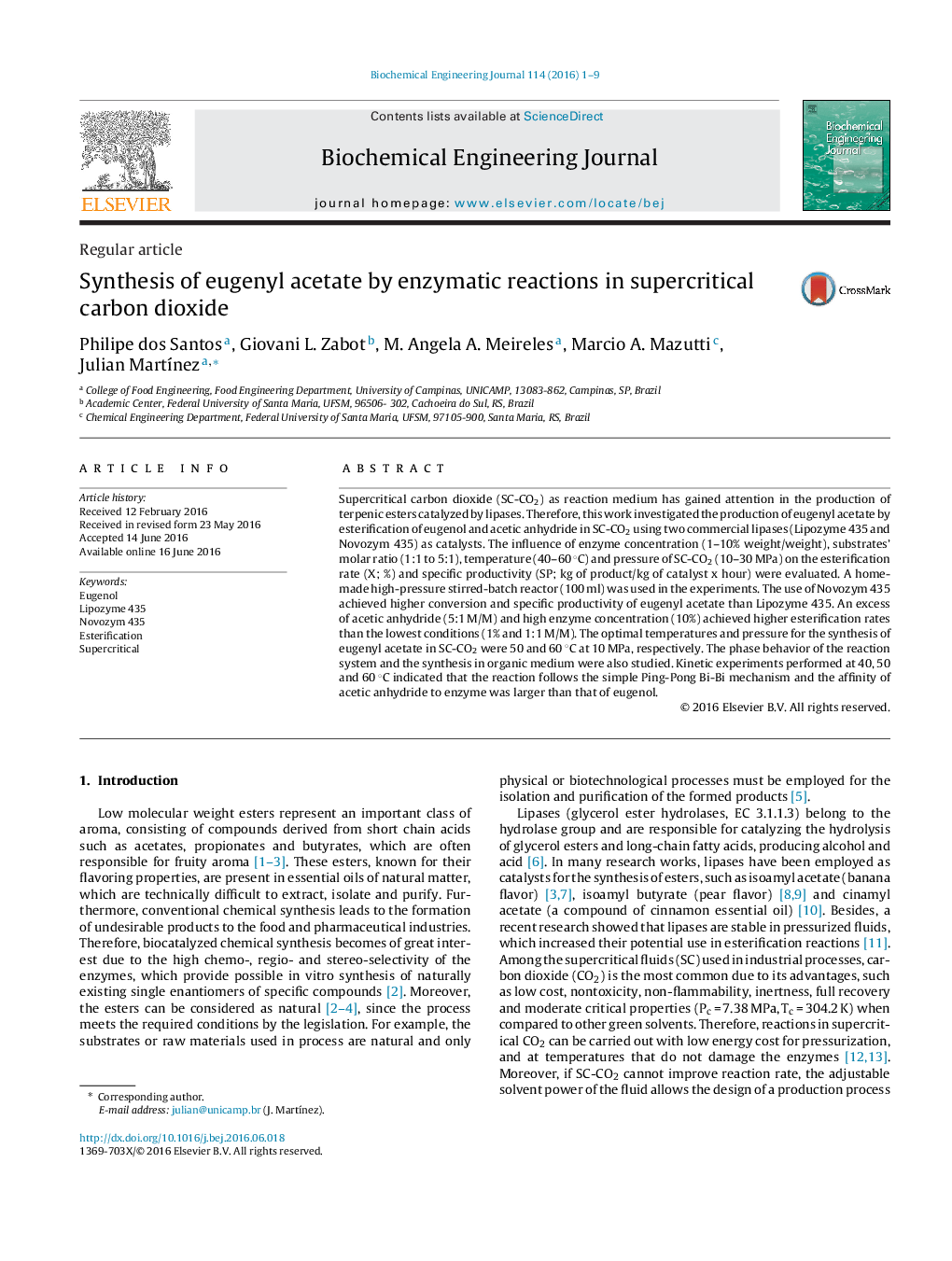| کد مقاله | کد نشریه | سال انتشار | مقاله انگلیسی | نسخه تمام متن |
|---|---|---|---|---|
| 2668 | 126 | 2016 | 9 صفحه PDF | دانلود رایگان |
• Optimal condition for the synthesis of eugenyl acetate in SC-CO2 was determined at 60 °C/10 MPa.
• The phase behavior of the reaction system and the synthesis in organic medium also were studied.
• The conversion and yield of eugenyl acetate decreased with the increasing number of cycles.
• The affinity of acetic anhydride to the enzyme was larger than that of eugenol.
• The second step of the reaction kinetics required more energy that the first step.
Supercritical carbon dioxide (SC-CO2) as reaction medium has gained attention in the production of terpenic esters catalyzed by lipases. Therefore, this work investigated the production of eugenyl acetate by esterification of eugenol and acetic anhydride in SC-CO2 using two commercial lipases (Lipozyme 435 and Novozym 435) as catalysts. The influence of enzyme concentration (1–10% weight/weight), substrates’ molar ratio (1:1 to 5:1), temperature (40–60 °C) and pressure of SC-CO2 (10–30 MPa) on the esterification rate (X; %) and specific productivity (SP; kg of product/kg of catalyst x hour) were evaluated. A home-made high-pressure stirred-batch reactor (100 ml) was used in the experiments. The use of Novozym 435 achieved higher conversion and specific productivity of eugenyl acetate than Lipozyme 435. An excess of acetic anhydride (5:1 M/M) and high enzyme concentration (10%) achieved higher esterification rates than the lowest conditions (1% and 1:1 M/M). The optimal temperatures and pressure for the synthesis of eugenyl acetate in SC-CO2 were 50 and 60 °C at 10 MPa, respectively. The phase behavior of the reaction system and the synthesis in organic medium were also studied. Kinetic experiments performed at 40, 50 and 60 °C indicated that the reaction follows the simple Ping-Pong Bi-Bi mechanism and the affinity of acetic anhydride to enzyme was larger than that of eugenol.
Figure optionsDownload as PowerPoint slide
Journal: Biochemical Engineering Journal - Volume 114, 15 October 2016, Pages 1–9
